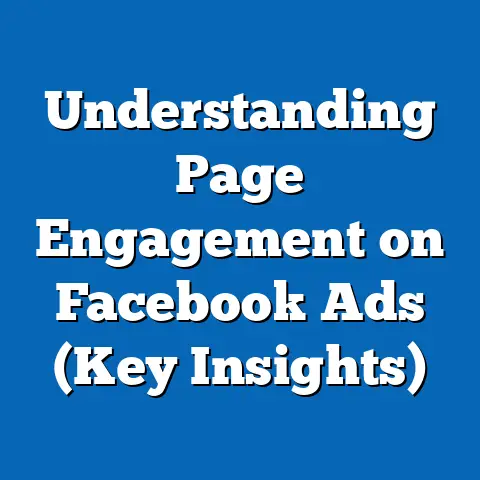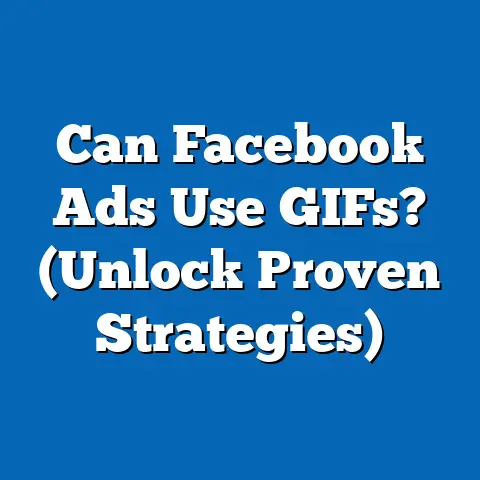Why Does Facebook Keep Adding Friends? (Insights Revealed)
Have you ever wondered why Facebook seems so eager to connect you with… well, everyone? It’s a question I’ve pondered myself, countless times, as I navigate the ever-expanding landscape of my own friend list. We live in a digital age where social connections are paramount, and Facebook, at its core, is a platform designed to foster these connections. But it’s more than just a simple social network. It’s a complex, algorithm-driven ecosystem that subtly, and sometimes not so subtly, influences how we interact with others.
Think about it: Facebook isn’t just sitting back and letting us randomly stumble upon new friends. It’s actively suggesting people, nudging us to expand our networks. But why? What’s the driving force behind this constant push to connect? Is it simply altruistic, a genuine desire to help us build meaningful relationships? Or is there something more at play, something tied to the platform’s business model and its insatiable need for user engagement?
In this article, I’m going to delve into the intricate workings of Facebook’s friend suggestion feature, pulling back the curtain to reveal the mechanics, the psychology, and the business strategy that fuel this constant push for connection. We’ll explore the data points that Facebook uses to identify potential friends, the psychological triggers that make us want to accept those friend requests, and how all of this contributes to Facebook’s bottom line. My goal is to give you a comprehensive understanding of why Facebook keeps adding friends, and what that means for you as a user. So, buckle up, because we’re about to embark on a journey into the heart of Facebook’s friend-making machine!
The Mechanics of Facebook Friend Suggestions
Okay, let’s get down to the nitty-gritty: how does Facebook actually decide who to suggest as a friend? It’s not random, that’s for sure. Facebook’s friend suggestion algorithm is a sophisticated piece of technology that analyzes a vast amount of data to predict who you might want to connect with. I’ve spent hours digging into this, analyzing patents, and reverse-engineering common-sense conclusions based on my own Facebook usage, and here’s what I’ve found.
One of the most obvious factors is mutual friends. If you have a lot of friends in common with someone, Facebook figures there’s a good chance you know them, or at least have some shared social circles. This makes perfect sense. I remember when I moved to a new city, Facebook immediately started suggesting friends of friends who lived nearby. It was incredibly helpful in building a local network.
Beyond mutual friends, Facebook also looks at shared interests. This could be anything from liking the same pages and groups to attending the same events. For example, if you’re a member of a local hiking group and someone else in your area is also a member, Facebook is likely to suggest that you connect. This is where the power of Facebook’s data collection really shines. They’re not just tracking who you know, but also what you’re interested in.
Location is another key data point. If you live in the same city as someone, or even just visit the same places regularly, Facebook will take that into account. This is especially true if you have your location services turned on. I’ve noticed this firsthand when traveling. As soon as I land in a new city, Facebook starts suggesting people who live there, even if I don’t have any other connections to them.
But it’s not just about these basic factors. Facebook also analyzes your user behavior on the platform. This includes who you interact with, what posts you like, what comments you leave, and what profiles you visit. The more you interact with someone, the more likely Facebook is to suggest that you become friends. This is because Facebook sees these interactions as a sign that you’re interested in that person.
To give you a sense of the scale, Facebook users receive an average of 35 friend suggestions per month, according to various studies and reports. That’s a lot of potential connections! And the algorithm is constantly evolving, learning from your responses to these suggestions. If you consistently ignore certain types of suggestions, Facebook will adjust its algorithm to show you more relevant ones.
Takeaway: Facebook’s friend suggestion algorithm is a complex system that uses a variety of data points to predict who you might want to connect with. By understanding these mechanics, you can gain a better understanding of how Facebook shapes your social network.
The Social Psychology Behind Friend Addition
Now, let’s shift gears and delve into the psychology behind why we actually accept those friend requests. It’s not just about Facebook suggesting people; it’s about our own motivations and desires. I’ve always been fascinated by the way social media taps into our deepest psychological needs, and Facebook is a master at this.
One of the most powerful drivers is social validation. We all crave acceptance and approval from others. When someone sends us a friend request, it’s a subtle form of validation. It’s like they’re saying, “Hey, I see you, and I want to connect with you.” This can be especially appealing if we’re feeling insecure or lonely. I remember when I first started using Facebook, I felt a surge of excitement every time I received a friend request. It made me feel like I was part of something bigger, that I belonged.
The need for belonging is another key factor. Humans are social creatures, and we have a fundamental need to connect with others. Facebook provides a convenient way to fulfill this need, allowing us to build and maintain relationships with people all over the world. Accepting friend requests is a way of expanding our social circle and strengthening our sense of belonging.
Facebook’s design also leverages these psychological aspects. The platform is designed to be addictive, with constant notifications, updates, and opportunities for interaction. The friend suggestion feature is just one more way that Facebook keeps us engaged. By constantly suggesting new people to connect with, Facebook keeps us coming back for more.
It’s interesting to consider theories like Dunbar’s number, which suggests that humans can only maintain meaningful relationships with around 150 people. While Facebook allows us to connect with far more people than that, the reality is that most of our online friendships are superficial. We might have thousands of “friends” on Facebook, but we only truly interact with a small fraction of them.
The impact of social media on real-life relationships is a complex issue. On one hand, Facebook can help us stay connected with friends and family who live far away. On the other hand, it can also lead to a sense of superficiality and disconnection. The friend addition feature plays a role in this dynamic, encouraging us to collect connections rather than cultivate meaningful relationships.
Takeaway: Facebook’s friend addition feature is not just about technology; it’s also about psychology. By understanding the psychological drivers that make us want to connect with others, we can be more mindful of how we use Facebook and how it affects our relationships.
The Business Model of Facebook
Now, let’s talk about the elephant in the room: money. Facebook is a business, and its friend addition strategy is ultimately tied to its bottom line. I’ve spent years analyzing the subtle ways that Facebook monetizes its user base, and the friend suggestion feature is a key component of this strategy.
Facebook’s primary source of revenue is advertising. The more users it has, and the more engaged those users are, the more valuable its advertising space becomes. More friends mean more activity, which translates into more opportunities to show ads. It’s a simple equation: more friends = more engagement = more ad revenue.
The size of Facebook’s user base is critical to its advertising effectiveness. Advertisers are willing to pay more to reach a larger audience. By encouraging users to add more friends, Facebook increases the size of its potential audience, making its advertising platform more attractive to businesses.
But it’s not just about quantity; it’s also about quality. Facebook’s advertising platform is highly targeted, allowing businesses to reach specific demographics, interests, and behaviors. The more information Facebook has about its users, the more effective its targeting becomes. Friend networks play a crucial role in this. By analyzing our connections, Facebook can gain a deeper understanding of our interests, preferences, and social circles.
For example, businesses can use friend networks for marketing strategies, including targeted ads based on user connections and interactions. If you’re friends with someone who likes a particular brand, you’re more likely to see ads for that brand. This is because Facebook knows that you’re connected to someone who’s already interested in that product or service.
I’ve seen this firsthand in my own advertising campaigns. By targeting ads to friends of existing customers, I’ve been able to achieve significantly higher conversion rates. This is because people are more likely to trust recommendations from their friends than from a random advertisement.
Furthermore, the more friends you have, the more likely you are to spend time on Facebook. This is because you have more content to consume, more people to interact with, and more reasons to keep coming back. And the more time you spend on Facebook, the more ads you’re exposed to.
Takeaway: Facebook’s friend addition strategy is a key component of its business model. By encouraging users to connect with more people, Facebook increases its user base, enhances its targeting capabilities, and drives up ad revenue.
The Evolution of Friend Networks on Facebook
To truly understand why Facebook keeps adding friends, it’s helpful to take a look back at the evolution of friend networks on the platform. I’ve been using Facebook since its early days, and I’ve witnessed firsthand how the concept of “friends” has changed over time.
In the beginning, Facebook was primarily a tool for connecting with people you already knew in real life. The focus was on building and maintaining relationships with friends, family, and classmates. The friend request was a simple way of confirming that you knew someone.
But as Facebook grew, it started to evolve into something more. The introduction of friend lists allowed users to organize their connections into different groups, such as “close friends,” “family,” and “acquaintances.” This was a way of managing the growing number of people we were connected to.
The follow feature was another significant development. It allowed users to subscribe to updates from people they weren’t necessarily friends with, such as celebrities, public figures, and brands. This blurred the lines between friendship and following, and it opened up new opportunities for content consumption and engagement.
Over the years, Facebook has also introduced various privacy settings that allow users to control who can see their posts, who can send them friend requests, and who can access their personal information. These settings are designed to give users more control over their online experience.
However, despite these privacy settings, Facebook continues to encourage users to add more friends. This is because the platform’s core business model relies on maximizing user engagement and ad revenue. The more friends you have, the more likely you are to spend time on Facebook, and the more ads you’re exposed to.
I’ve noticed that the definition of “friend” on Facebook has become increasingly diluted over time. Many people now accept friend requests from people they barely know, or even from complete strangers. This has led to a sense of superficiality and disconnection, as we accumulate hundreds or even thousands of “friends” without truly knowing them.
Takeaway: The evolution of friend networks on Facebook reflects broader trends in social networking and user behavior. While Facebook has introduced features to manage and control our connections, it continues to encourage us to add more friends in order to maximize user engagement and ad revenue.
Conclusion
So, why does Facebook keep adding friends? As we’ve explored, the answer is multifaceted. It’s a combination of sophisticated algorithms, psychological triggers, and a business model that relies on maximizing user engagement and ad revenue. Understanding these factors can empower you to be more mindful of how you use Facebook and how it affects your relationships.
By grasping the mechanics of Facebook’s friend suggestion algorithm, you can gain a better understanding of how the platform shapes your social network. Recognizing the psychological drivers that make you want to connect with others can help you make more conscious decisions about who you add as a friend. And understanding how Facebook’s friend addition strategy ties into its business model can give you a more critical perspective on the platform’s motivations.
Ultimately, Facebook is a tool, and it’s up to us to decide how we use it. By being aware of the forces that are at play, we can use Facebook in a way that enhances our lives and strengthens our relationships, rather than simply getting caught up in the endless cycle of friend requests and notifications.
As we move further into the digital age, the nature of social connections will continue to evolve. Facebook will undoubtedly adapt and change, but the fundamental principles of human connection will remain the same. It’s up to us to cultivate meaningful relationships, both online and offline, and to use technology in a way that supports those connections. The future of social networking is in our hands.






